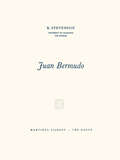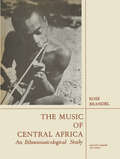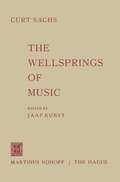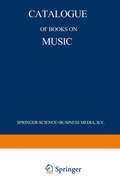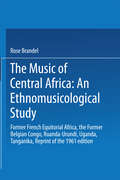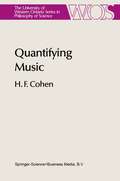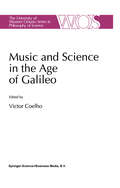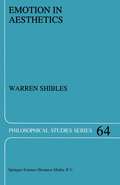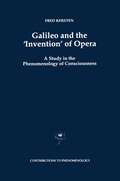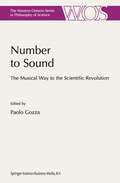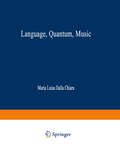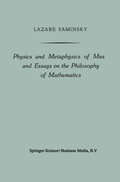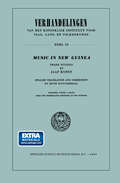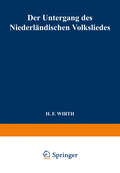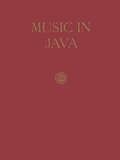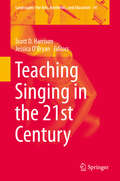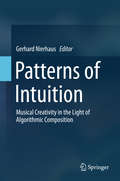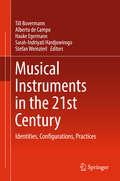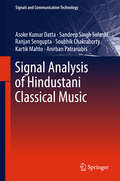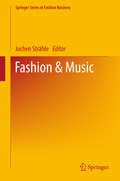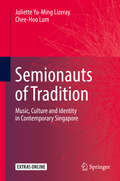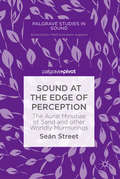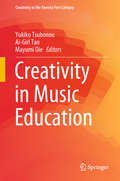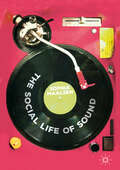- Table View
- List View
Juan Bermudo
by R. StevensonBERMUDO alone of the many Spanish theorists and composers of the 16th century seems to have written anything specifically for New World use. All the more fitting is it, then, to have completed this monograph in a part of the Spanish Indies that was stirring every Andalusian's imagination during the days when he was first sending his books across the Atlantic. In every way his was a remarkable personality. He was the first to compose and publish any organ music in Spain. As if the publication of such music in staff-notation were not enough he also published the first Spanish keyboard piece in tablature. He was the first in Spain to print any music in score. He is cited by Pincherle as the first to publish a harp method anywhere. He pioneered with the first treatise specifically designed for female use. He also "enjoys" the distinction of having become in Tapia's Verge! de Musica (1570) the most ruthlessly plagiarized writer in Spanish musical history. If bulk determines preeminence he stands above even Tomas de Santa Maria - who published only one volume, and that containing considerably less text. If range of interests determines rank no one else writing in Spanish during his century even approaches him. Nor does anyone else in Spanish have so many authorities at his fingertips.
The Music of Central Africa: An Ethnomusicological Study Former French Equatorial Africa the Former Belgian Congo, Ruanda-Urundi Uganda, Tanganyika
by Rose BrandelUnder the inspiring guidance of my mentor, Curt Sachs, this work was conceived, planned, and executed. It gained in dimension under the acute and patient perusal of Gustave Reese to whose brilliant propensity for clarity of thought and of style I owe a huge debt. Furthermore, the helpful suggestions made by Martin Bernstein and by J an LaRue are gratefully acknowledged. If Jaap Kunst had not kindly gone to the trouble of ordering, supervising the con struction of, and mailing to me from Amsterdam his personally designed monochord, an important section of this work could not have taken form. This preface is not complete, of course, without final thanks to my husband, Harvey B. Natanson, for his sustained interest and encouragement. R. B. Note As the present work goes to press, the political map of Africa is flowing into a new mold. Several countries have obtained independence, and new names and data should be con sidered: French Equatorial Africa has become (November 28-December I, 1958) four independent countries - Republic of the Congo: Brazzaville (formerly Middle Congo), Gabon Republic (formerly Gabon) , Central African Republic (formerly Ubangi-Shari), and Republic of Chad (formerly Chad). The Belgian Congo has become (June 30,1960) the Republic of the Congo: Leopoldville.
The Music of Central Africa: Former French Equatorial Africa the Former Belgian Congo, Ruanda-Urundi Uganda, Tanganyika
by R. BrandelUnder the inspiring guidance of my mentor, Curt Sachs, this work was conceived, planned, and executed. It gained in dimension under the acute and patient perusal of Gustave Reese to whose brilliant propensity for clarity of thought and of style lowe a huge debt. Furthermore, the helpful suggestions made by Martin Bernstein and by Jan LaRue are gratefully acknowledged. If Jaap Kunst had not kindly gone to the trouble of ordering, supervising the con struction of, and mailing to me from Amsterdam his personally designed monochord, an important section of this work could not have taken form. This preface is not complete, of course, without final thanks to my husband, Harvey B. N atanson, for his sustained interest and encouragement. R. B. Note As the present work goes to press, the political map of Africa is flowing into a new mold. Several countries have obtained independence, and new names and data should be con sidered: French Equatorial Africa has become (November 28-December I, 1958) four independent countries - Republic of the Congo: Brazzaville (formerly Middle Congo), Gabon Republic (formerly Gabon), Central African Republic (formerly Ubangi-Shari), and Republic of Chad (formerly Chad). The Belgian Congo has become (June 30, 1960) the Republic of the Congo: Leopoldville.
Quantifying Music: The Science of Music at the First Stage of Scientific Revolution 1580–1650 (The Western Ontario Series in Philosophy of Science #23)
by H.F. CohenThe soul rejoices in perceiving harmonious sound; when the sound is not harmonious it is grieved. From these affects of the soul are derived the name of consonances for the harmonic proportions, and the name of dissonances for the unharmonic proportions. When to this is added the other harmonie proportion whieh consists of the longer or shorter duration of musical sound, then the soul stirs the body to jumping dance, the tongue to inspired speech, according to the same laws. The artisans accommodate to these harmonies the blows of their hammers, the soldiers their pace. As long as the harmonies endure, everything is alive; everything stiffens, when they are disturbed.! Thus the German astronomer, Johannes Kepler, evokes the power of music. Where does this power come from? What properties of music enable it to stir up emotions which may go far beyond just feeling generally pleased, and which may express themselves, for instance, in weeping; in laughing; in trembling over the whole body; in a marked acceleration of breathing and heartbeat; in participating in the rhythm with the head, the hands, the arms, and the feet? From the beginning of musical theory the answer to this question has been sought in two different directions.
Music and Science in the Age of Galileo (The Western Ontario Series in Philosophy of Science #51)
by VictorCoelhoMusic and Science in the Age of Galileo features twelve new essays by leading specialists in the fields of musicology, history of science, astronomy, philosophy, and instrument building that explore the relations between music and the scientific culture of Galileo's time. The essays take a broad historical approach towards understanding such topics as the role of music in Galileo's experiments and in the scientific revolution, the musical formation of scientists, Galileo's impact on the art and music of his time, the scientific knowledge of instrument builders, and the scientific experiments and cultural context of Galileo's father, Vincenzo Galilei. This volume opens up new areas in both musicology and the history of science, and twists together various strands of parallel work by musicians and scientists on Galileo and his time. This book will be of interest to musicologists, historians of science and those interested in interdisciplinary perspectives of the late Renaissance -- early Baroque. For its variety of approaches, it will be a valuable collection of readings for graduate students, and those seeking a more integrated approach to historical problems. The book will be of interest to historians of science, philosophers, musicologists, astronomers, and mathematicians.
Emotion in Aesthetics (Philosophical Studies Series #64)
by Warren A. ShiblesEmotion in Aesthetics is the first book on aesthetics to provide an extensive theory of emotion; application of the cognitive-emotive theory to aesthetics; analysis of the relationship between aesthetics, metaphor and emotion; a full theory of meaning and its application to aesthetics; discussion of the relationship between aesthetics, music and language in terms of phonetics, phonology and intonation; an analysis of humanistic aesthetics; a well-developed naturalistic theory of ethics as applied to aesthetics and emotion. Stress is placed on the views of contemporary philosophers as well as some of the main historical accounts of emotion in aesthetics. The important recent work on emotion has not hitherto been applied to aesthetics. As a result there is still much confusion in aesthetics about aesthetic emotion and related concepts, such as the expression theory of emotion. The present book has been written to show how the theory can be used to clarify the issue, resulting in a major breakthrough in aesthetics. In addition, the theory presented is valuable in relating aesthetics to ethics and humanism.
Galileo and the ‘Invention’ of Opera: A Study in the Phenomenology of Consciousness (Contributions to Phenomenology #29)
by F. KerstenIntended for scholars in the fields of philosophy, history of science and music, this book examines the legacy of the historical coincidence of the emergence of science and opera in the early modern period. But instead of regarding them as finished products or examining their genesis, or `common ground', or `parallel' ideas, opera and science are explored by a phenomenology of the formulations of consciousness (Gurwitsch) as compossible tasks to be accomplished in common (Schutz) which share an ideal possibility or `essence' (Husserl). Although the ideas of Galileo and Monteverdi form the parameters of the domain of phenomenological clarification, the scope of discussion extends from Classical ideas of science and music down to the beginning of the nineteenth century, but always with reference to the experience of sharing the sociality of a common world from which they are drawn (Plessner) and to which those ideas have given shape, meaning and even substance. At the same time, this approach provides a non-historicist alternative to understanding the arts and science of the modern period by critically clarifying the idea of whether their compossibility can rest on any other formulation of consciousness.
Number to Sound: The Musical Way to the Scientific Revolution (The Western Ontario Series in Philosophy of Science #64)
by Paolo GozzaNumber 10 Sound: The Musical Way 10 the Scientific Revolution is a collection of twelve essays by writers from the fields of musicology and the history of science. The essays show the idea of music held by Euro th pean intellectuals who lived from the second half of the 15 century to the th early 17 : physicians (e. g. Marsilio Ficino), scholars of musical theory (e. g. Gioseffo Zarlino, Vincenzo Galilei), natural philosophers (e. g. Fran cis Bacon, Isaac Beeckman, Marin Mersenne), astronomers and mathema ticians (e. g. Johannes Kepler, Galileo Galilei ). Together with other people of the time, whom the Reader will meet in the course of the book, these intellectuals share an idea of music that is far removed from the way it is commonly conceived nowadays: it is the idea of music as a science whose object-musical sound--can be quantified and demonstrated, or enquired into experimentally with the methods and instruments of modem scientific enquiry. In this conception, music to be heard is a complex, variable structure based on few simple elements--e. g. musical intervals-, com bined according to rules and criteria which vary along with the different ages. However, the varieties of music created by men would not exist if they were not based on certain musical models--e. g. the consonances-, which exist in the mind of God or are hidden in the womb of Nature, which man discovers and demonstrates, and finally translates into the lan guage of sounds.
Language, Quantum, Music (Synthese Library #281)
by Maria Luisa Dalla Chiara Roberto Giuntini Federico LaudisaA vivid and comprehensive picture of the current state of research in all directions of logic and philosophy of science. The book presents a wide combination of papers containing relevant technical results in the foundations of science and papers devoted to conceptual analyses, deeply rooted in advanced present-day research. Audience: The volume is attractive both for specialists in foundational questions and scholars interested in general epistemology.
Music in New Guinea: Three Studies (Verhandelingen van het Koninklijk Instituut voor Taal-, Land- en Volkenkunde)
by Jaap KunstDer Untergang des Niederländischen Volksliedes
by H. F. WirthDieser Buchtitel ist Teil des Digitalisierungsprojekts Springer Book Archives mit Publikationen, die seit den Anfängen des Verlags von 1842 erschienen sind. Der Verlag stellt mit diesem Archiv Quellen für die historische wie auch die disziplingeschichtliche Forschung zur Verfügung, die jeweils im historischen Kontext betrachtet werden müssen. Dieser Titel erschien in der Zeit vor 1945 und wird daher in seiner zeittypischen politisch-ideologischen Ausrichtung vom Verlag nicht beworben.
Teaching Singing in the 21st Century (Landscapes: the Arts, Aesthetics, and Education #14)
by Scott D. Harrison Jessica O'BryanThis volume brings together a group of leading international researchers and practitioners in voice pedagogy alongside emerging academics and practitioners. Encompassing research across voice science and pedagogy, this innovative collection transcends genre boundaries and provides new knowledge about vocal styles and approaches from classical and musical theatre to contemporary commercial music. The work is sure to be valuable in tertiary institutions, schools and community music associations, suitable for use by private studio teachers, and will appeal to choral leaders and music educators interested in vocal pedagogy. “I thoroughly enjoyed reading this book and I am confident it will help bring all aspects of vocal pedagogy firmly into the 21st century. Refreshingly, many different areas of pedagogy are included in the text so we can all work together to more fully understand the singing voice. Up to the moment research is included along with an exploration of the evolving contemporary styles of singing. Further, areas regarding teaching and curriculum in higher education are also reviewed. All in all, this text a crucial addition to a professional's vocal library.” Jeanne Goffi-Fynn, Teachers College, Columbia University, USA.
Patterns of Intuition: Musical Creativity in the Light of Algorithmic Composition
by Gerhard NierhausThe present book is the result of a three year research project which investigated the creative act of composing by means of algorithmic composition. Central to the investigation are the compositional strategies of 12 composers, which were documented through a dialogic and cyclic process of modelling and evaluating musical materials. The aesthetic premises and compositional approaches configure a rich spectrum of diverse positions, which is reflected also in the kinds of approaches and methods used. These approaches and methods include the generation and evaluation of chord sequences using genetic algorithms, the application of morphing strategies to research harmonic transformations, an automatic classification of personal preferences via machine learning, and an application of mathematical music theory to the analysis and resynthesis of musical material. The second part of the book features contributions by Sandeep Bhagwati, William Brooks, David Cope, Darla Crispin, Nicolas Donin, and Guerino Mazzola. These authors variously consider the project from different perspectives, offer independent approaches, or provide more general reflections from their respective research fields.
Musical Instruments in the 21st Century: Identities, Configurations, Practices
by Till Bovermann Alberto De Campo Hauke Egermann Sarah-Indriyati Hardjowirogo Stefan WeinzierlBy exploring the many different types and forms of contemporary musical instruments, this book contributes to a better understanding of the conditions of instrumentality in the 21st century. Providing insights from science, humanities and the arts, authors from a wide range of disciplines discuss the following questions: · What are the conditions under which an object is recognized as a musical instrument? · What are the actions and procedures typically associated with musical instruments? · What kind of (mental and physical) knowledge do we access in order to recognize or use something as a musical instrument? · How is this knowledge being shaped by cultural conventions and temporal conditions? · How do algorithmic processes 'change the game' of musical performance, and as a result, how do they affect notions of instrumentality? · How do we address the question of instrumental identity within an instrument's design process? · What properties can be used to differentiate successful and unsuccessful instruments? Do these properties also contribute to the instrumentality of an object in general? What does success mean within an artistic, commercial, technological, or scientific context?
Signal Analysis of Hindustani Classical Music (Signals and Communication Technology)
by Asoke Kumar Datta Sandeep Singh Solanki Ranjan Sengupta Soubhik Chakraborty Kartik Mahto Anirban PatranabisThis book presents a comprehensive overview of the basics of Hindustani music and the associated signal analysis and technological developments. It begins with an in-depth introduction to musical signal analysis and its current applications, and then moves on to a detailed discussion of the features involved in understanding the musical meaning of the signal in the context of Hindustani music. The components consist of tones, shruti, scales, pitch duration and stability, raga, gharana and musical instruments. The book covers the various technological developments in this field, supplemented with a number of case studies and their analysis. The book offers new music researchers essential insights into the use the automatic concept for finding and testing the musical features for their applications. Intended primarily for postgraduate and PhD students working in the area of scientific research on Hindustani music, as well as other genres where the concepts are applicable, it is also a valuable resource for professionals and researchers in musical signal processing.
Fashion & Music (Springer Series in Fashion Business)
by Jochen SträhleThis book will broaden readers’ understanding of the links between the music and fashion industries. It highlights the challenges currently facing the fashion industry in terms of hyper-competition, definition of ever-faster trends, changing consumer demands etc. In fact, the fashion industry is heavily influenced by the digital revolution in the music industry, which has changed the face of individual music consumption and social reference, and therefore, also has impacts on fashion consumption and social reference. This understanding is crucial in order to realign any fashion company’s strategies to the demands of modern fashion consumers. In terms of content, the book first discusses the social perspective of fashion and music. This includes an analysis of music as a key influencer of fashion trends, both theoretically and on the basis of a case study on grunge music. Then the role of music in the fashion business is addressed, and covers in-store music and the role of music in fashion communication. Following up, the role of fashion in the music business is analyzed. This includes the trend of co-design of fashion collections, music artists’ role of differentiation by style, and the market for music fashion merchandise articles (both theoretically and drawing on a case study). In closing, potential lessons learned from the music industry are developed for the fashion industry. This includes an analysis of the digital revolution and the advent of the crowdfunding idea (both theoretically and in a case study).
Semionauts of Tradition: Music, Culture and Identity in Contemporary Singapore
by Chee-Hoo Lum Juliette Yu-Ming LizerayThis book explores questions of identity, cultural change and creativity from the perspective of contemporary musicians currently engaged in redefining Asian musical traditions and notions of heritage in Singapore. Drawing on the fields of anthropology, cultural studies, and ethnomusicology, Semionauts of Tradition focuses on emerging millennial musicians and explores the complex and interwoven cultural, national, musical, and personal identifications in their discourse and music practice. It shows how they create fluid, hybrid and counter-hegemonic forms of expression, representation and identity through their navigation of diverse cultural worlds, their incorporation of a myriad of elements into their own identities and music, and their contestations of preconceived notions of difference and tradition. The book exposes paradoxes within current thinking about ‘multiracialism’, ‘racial harmony’, the ‘East/West divide’ and ‘tradition versus modernity,’ and proposes new ways of understanding identity, cultural change and creativity in a highly globalised, and diverse nation. This highly-original polyvocal account of a burgeoning music scene includes photos, musical scores and reaction pieces by musicians. It is a timely contribution to global discussions about ‘multiculturalism from below,’ as well as musical, cultural and national identities in a postcolonial Southeast Asian setting, from the viewpoint of artists engaged in creative meaning-making. "This captivating book explores - with tremendous intellectual vitality - the dialectic relationships between the cultural, ethnic and national identities of Singapore’s creative youth, and their creative practice. A compelling read!" Dr Liora Bresler, Professor, University of Illinois "A well-researched and thoughtfully well-written book about the diverse forms of music in Singapore and the musicians who created it." - Jeremy Monteiro, jazz pianist, singer, composer, and music educator "This wonderfully lucid and compelling book analyzes the musical and cultural creativity of young Singaporean musicians growing up in a multicultural and ethnically plural society, bringing Asian and Western musical cultures into creative dialogue." - Dr Deborah Pacini Hernandez, Professor Emeritus, Tufts University "A thought provoking dialogue on contemporary Singaporean music!" -Eric Watson, composer, conductor, music technologist and pedagogue
Sound at the Edge of Perception: The Aural Minutiae of Sand and other Worldly Murmurings (Palgrave Studies in Sound)
by Seán StreetThis book is about the tiny sounds of the world, and listening to them, the minute signals that are clues to who and where we are. A very small sound, given the context of its history, becomes hugely significant, and even an imagined sound in a picture becomes almost a voice. By speaking a name, we give a person back to the world, and a breath, a sigh, a laugh or a cry need no language. A phoneme is the start of all stories, and were we able to tune ourselves to the subtleties of the natural world, we might share the super-sensitivity of members of the bird and animal kingdom to sense the message in the apparent silence. Mind hears sound when it perceives an image; the book will appeal to sonic and radio practitioners, students of sound, those working in the visual arts, and creative writers.
Sound at the Edge of Perception: The Aural Minutiae of Sand and other Worldly Murmurings (Palgrave Studies in Sound)
by Seán StreetThis book is about the tiny sounds of the world, and listening to them, the minute signals that are clues to who and where we are. A very small sound, given the context of its history, becomes hugely significant, and even an imagined sound in a picture becomes almost a voice. By speaking a name, we give a person back to the world, and a breath, a sigh, a laugh or a cry need no language. A phoneme is the start of all stories, and were we able to tune ourselves to the subtleties of the natural world, we might share the super-sensitivity of members of the bird and animal kingdom to sense the message in the apparent silence. Mind hears sound when it perceives an image; the book will appeal to sonic and radio practitioners, students of sound, those working in the visual arts, and creative writers.
Creativity in Music Education (Creativity In The Twenty First Century Ser.)
by Yukiko Tsubonou Ai-Girl Tan Mayumi OieThis book creates a platform for music educators to share their experience and expertise in creative music teaching and learning with the international community. It presents research studies and practices that are original and representative of music education in the Japanese, Asian and international communities. It also collects substantial literature on music education research in Japan and other Asian societies, enabling English-speaking readers to access excellent research and practical experiences in non-English societies.
The Social Life of Sound
by Sophia MaalsenThe Social Life of Sounds argues for the agency of sounds and music and the acceleration of their social lives in the Digital Age. Drawing upon research with composers, producers, record collectors, DJs and record labels, the book problematises the notion of artistic authorship as it is framed in Western systems of property. Acknowledging that ‘things’ – sounds, samples, and recorded music – and people are co-constituted and that personhood is distributed through things and their reuse, Maalsen makes a case for understanding sound as multibiographical and challenges the possessive individual that is the basis of artistic copyright.
